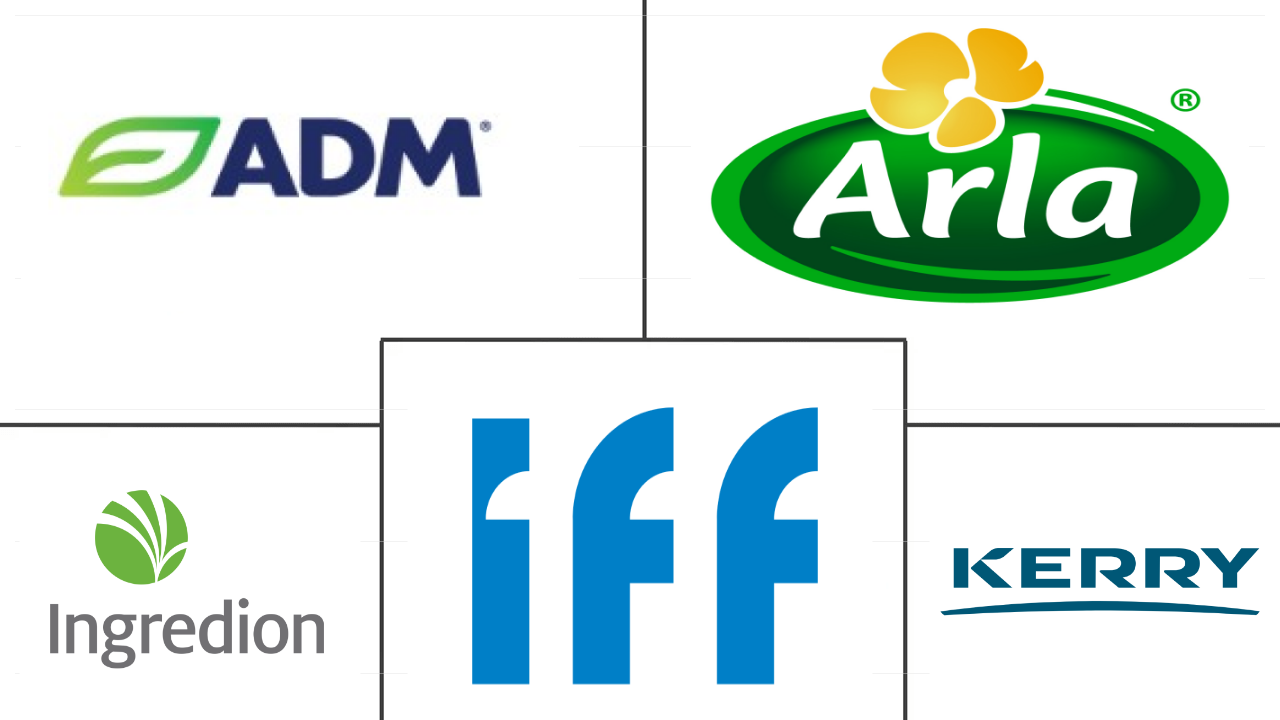Market Size of south america protein Industry
| Icons | Lable | Value |
|---|---|---|
|
|
Study Period | 2017 - 2029 |
|
|
Market Size (2024) | USD 1.62 Billion |
|
|
Market Size (2029) | USD 2.12 Billion |
|
|
Largest Share by End User | Food and Beverages |
|
|
CAGR (2024 - 2029) | 5.46 % |
|
|
Largest Share by Country | Brazil |
Major Players |
||

|
||
|
*Disclaimer: Major Players sorted in no particular order |
South America Protein Market Analysis
The South America Protein Market size is estimated at 1.62 billion USD in 2024, and is expected to reach 2.12 billion USD by 2029, growing at a CAGR of 5.46% during the forecast period (2024-2029).
1.62 Billion
Market Size in 2024 (USD)
2.12 Billion
Market Size in 2029 (USD)
5.27 %
CAGR (2017-2023)
5.46 %
CAGR (2024-2029)
Largest Market by Source
62.71 %
value share, Plant, 2023
Plant proteins have become the major protein source in South America as these proteins contain fewer allergic components, supported by a survey led by DuPont in the region.
Largest Market by End User
66.31 %
value share, Food and Beverages, 2023
The higher supply of plant proteins like rice, pea, and wheat proteins that can mimic meat texture, together with protein fortification, is catering to the segment.
Fastest growing Market by Source
6.13 %
Projected CAGR, Plant, 2024-2029
The fastest growth of plant protein is aided by the growth of the F&B industry, mainly bakery and snacks. Pea protein remained the region's fastest-growing plant protein.
Fastest growing Market by End User
6.48 %
Projected CAGR, Personal Care and Cosmetics, 2024-2029
The rise in demand for natural ingredients and protein-enriched skin, body, and hair care products is driving the segment. Thus it is projected to attain the fastest growth.
Leading Market Player
10.76 %
market share, International Flavors & Fragrances, Inc., Inc.

Being the market leader, the company has mainly focused on product innovation and partnerships to augment the production of pea protein, strengthening its market position.
With bakery and dairy/dairy alternatives industries seeing the largest application of protein, food and beverage occupied the leading market share in the region
- By end user, the F&B industry is the leading application sector for protein in the region. The key sub-segments of the F&B segment are bakery and dairy/dairy alternatives, both of which accounted for more than 46% of the total volume in 2022. Gelatin remains the most used protein in the bakery sector as it adds protein and acts as a transparent gelling and thickening agent in baked goods.
- Dairy and dairy alternatives are another important segment for animal proteins in the region, and it recorded a CAGR of 3.38% during the study period. The rise in sales comes with the usage of casein as a coagulant in cheese manufacture, along with the ongoing trend of protein fortification in the dairy desserts category. Manufacturers of products like ice creams and yogurts have launched protein-enriched versions of their existing products to make "high protein" and "added protein" claims. As a result, after casein and caseinates (which has application in the cheese industry), whey protein and milk protein were the most used animal proteins in the segment. These proteins are also added to improve mouthfeel, viscosity, and structure.
- The second-largest end-user segment remained animal feed. It has the highest CAGR (6.14% by volume) in plant protein application. Soy is a high-nutritional source with a less variable chemical composition than other protein sources, making it popular in animal feed. Furthermore, because soy concentrates contain easily digestible amino acids and aid in lipid and water retention, they are ideal for chicken pre-starter meals. Because soy production is high in the region, there will be a large supply at an affordable price. Because of the increased supply, manufacturers began incorporating soy protein in place of others in animal feed.
With growing concerns, consumers are increasingly adopting healthy diets, Brazil dominated the South American protein market
- The market is expected to see high growth potential, registering a CAGR of 5.21% during the forecast period, owing to the rise in government backing. For instance, the introduction of new regulations by the National Sanitary Surveillance Agency (ANIVSA) for dietary supplements in 2018 in Brazil made it much easier for brands to enter the country. It also made it easier for existing brands to flourish and innovate.
- By country, Brazil dominated the market, where plant protein demand leads the market. This high demand can be attributed to the country's aging population, which is estimated to triple by 2050, covering around 66 million Brazilians. With growing concerns, consumers are increasingly adopting healthy diets. As a result, Brazil recorded the fastest growth potential among all South American countries, with a CAGR of 6.55% during the forecast period. By application, the F&B segment leads the market demand, under which 70% of its demand is shared by the bakery, meat/meat alternatives, and dairy/dairy alternatives sub-segments.
- Among the two major classifications of microbial proteins, mycoprotein observes the highest share as well as the fastest CAGR, 3.96% by volume over the forecast period. Mycoprotein contains a lot of essential amino acids (EAAs). Its EAA content is 41% of the total protein, which is comparable to spirulina, a wide variety of alga protein sources. This value is higher than that of the majority of other commonly consumed plant-based proteins. Mycoprotein has a higher nutritional value, a meat-like texture, and a variety of functional properties, making it a promising protein source to replace both plant-based and animal-based meat proteins.
